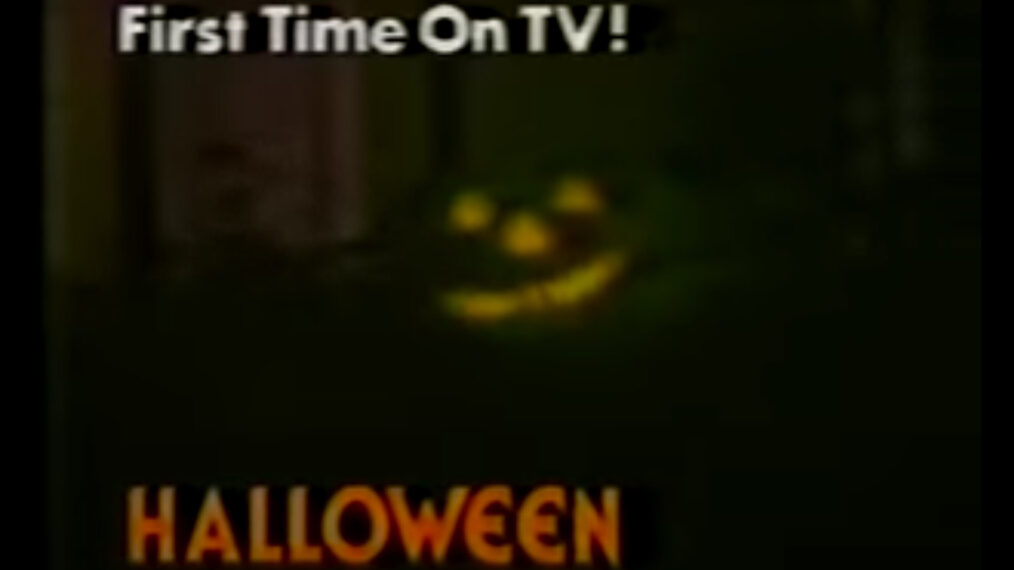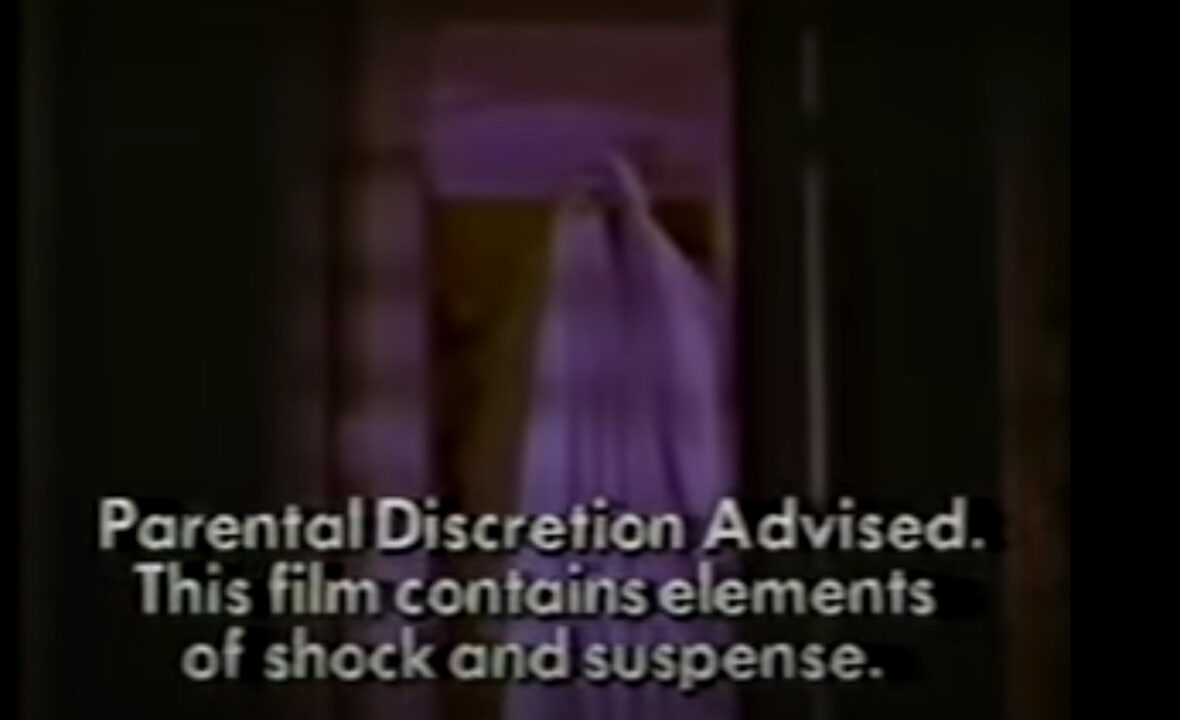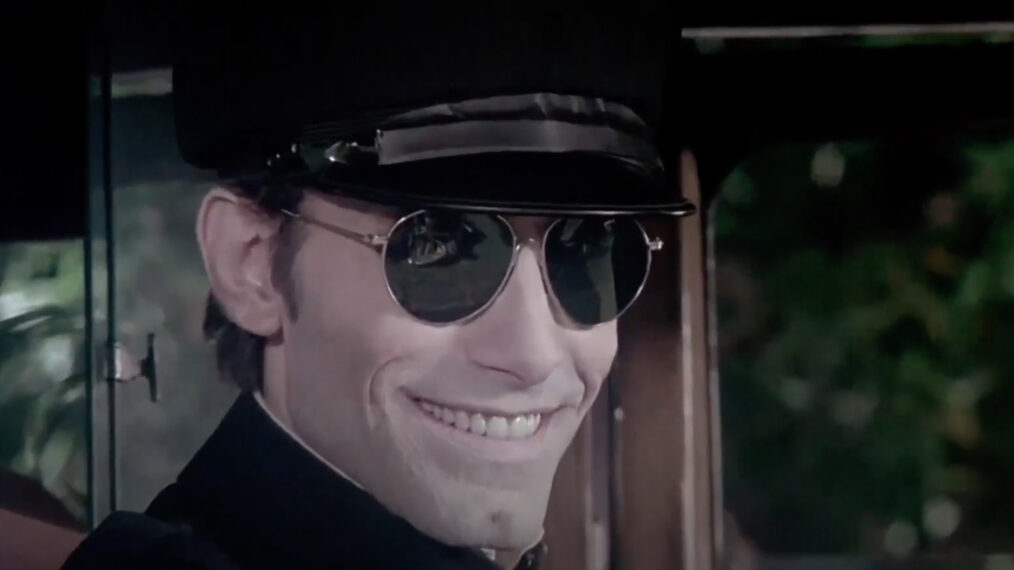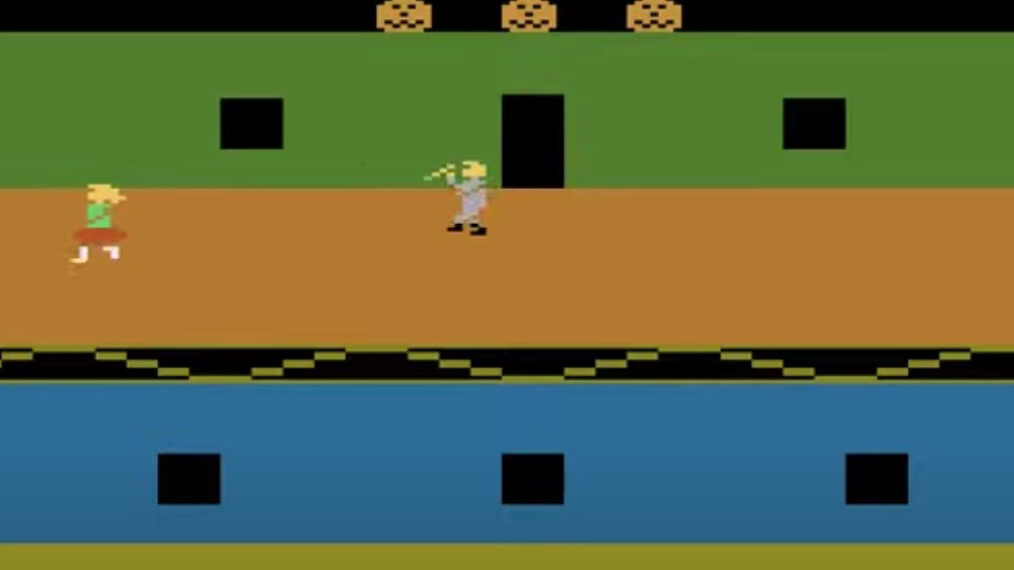Retro Nightmare Fuel: The Night ‘Halloween’ Came Home … to NBC’s ‘Friday Night at the Movies’

“This film contains elements of shock and suspense.”
Well, I can’t say that my sister and I (who were then ages 9 and 11, respectively) weren’t properly warned by the announcer during the intro to the Oct. 30, 1981, installment of NBC’s Friday Night at the Movies, which marked the broadcast TV premiere of John Carpenter’s 1978 horror classic Halloween.

© Compass International Pictures/NBC/Screenshot YouTube/@robatsea2009
We happened to be spending the night at our grandparents’ house that evening, with our parents out, probably at a Halloween party. We asked our grandpa if we could turn this on, and he — having no clue what it was — said sure.
That happened a few times back then, us being at our grandparents’ house and happening to catch some scary movie that our mom would never have let us watch at home.
Burnt Offerings was one title I saw for the first time while sleeping over there, happening upon a late-night broadcast while staying up alone, as was the TV movie Dark Night of the Scarecrow.
We also were with our grandparents when the 1979 Salem’s Lot miniseries premiered and effectively freaked my sister out with the scene in which a supposedly dead Danny Glick suddenly sprang up within his freshly dug grave and sank his teeth into the gravedigger’s neck.
As scary and sometimes nightmare-inducing as seeing these films were, I’m glad we had those experiences, and I think my sister is, too (she, too, loves to watch scary movies to this day). Strangely, these horrific films will sometimes actually stir pleasant memories of my now-departed grandparents and the fun we always had with them at their house.
On Oct. 30, 1981, Halloween was added to the list of horror films we were introduced to at grandma and grandpa’s place.
As my sister, grandpa and I sat in the family room watching NBC’s intro to the film, there certainly was a spooky atmosphere set right off the bat, with the announcer concluding his hype with an ominous warning: “You won’t be watching alone.”
The biggest thing I can still remember — and pretty vividly, actually — from watching the film itself was having a dream later that night about the scene in which a door slowly creaks open to reveal Michael Myers (Nick Castle) wearing a “ghost” sheet, so I guess that creepy moment must have really registered with me. I still think it’s one of the best shots in the movie.
About a year or two after this, when a friend and I watched the theatrical version of Halloween on his family’s video disc player, I was surprised that I did not see some of the scenes I could have sworn I had recalled being in the TV broadcast.
I later learned that a few additional scenes for NBC’s airing of Halloween — such as Dr. Loomis (Donald Pleasence) talking to the child Michael in an institution — had been filmed by Carpenter to help fill out the two-hour television time slot.
Revisiting these added scenes via YouTube in recent years, I’ve found that, to Carpenter’s credit, they are, mostly, not just TV filler. The ones with Loomis, especially, add more context and impact to the story. There is also an added scene featuring Laurie (Jamie Lee Curtis), Lynda (P.J. Soles) and Annie (Nancy Loomis) which, while not really necessary, doesn’t hurt the overall flow of the movie.
I can’t remember what all of its theatrical cut was left in Halloween during its NBC premiere, but I’m assuming that a big reason the film had to be stretched out with these scenes was because some of its violence, as well as any nudity and profanity, had been edited out for television.
But even in its uncut form, as I was kind of surprised to discover when I finally did see the original version on my friend’s video disc player, Halloween does not have a lot of blood and graphic violence. Certainly not as much as many of the slasher films that followed in its wake, including its own sequel, 1981’s Halloween II.
I’m not sure how much the film is edited when it airs now on networks like AMC, but it seems to me like it could probably get by with relatively minimal cuts, since Carpenter’s classic mostly relies on — as that NBC Friday Night at the Movies announcer kindly warned us way back when — “elements of shock and suspense” to work its magic as an unrelenting thriller.
Enough of those elements certainly did remain intact in the broadcast TV cut of Halloween that my sister and I viewed through widened eyes (when those eyes weren’t averted during some scenes) over 40 years ago.


